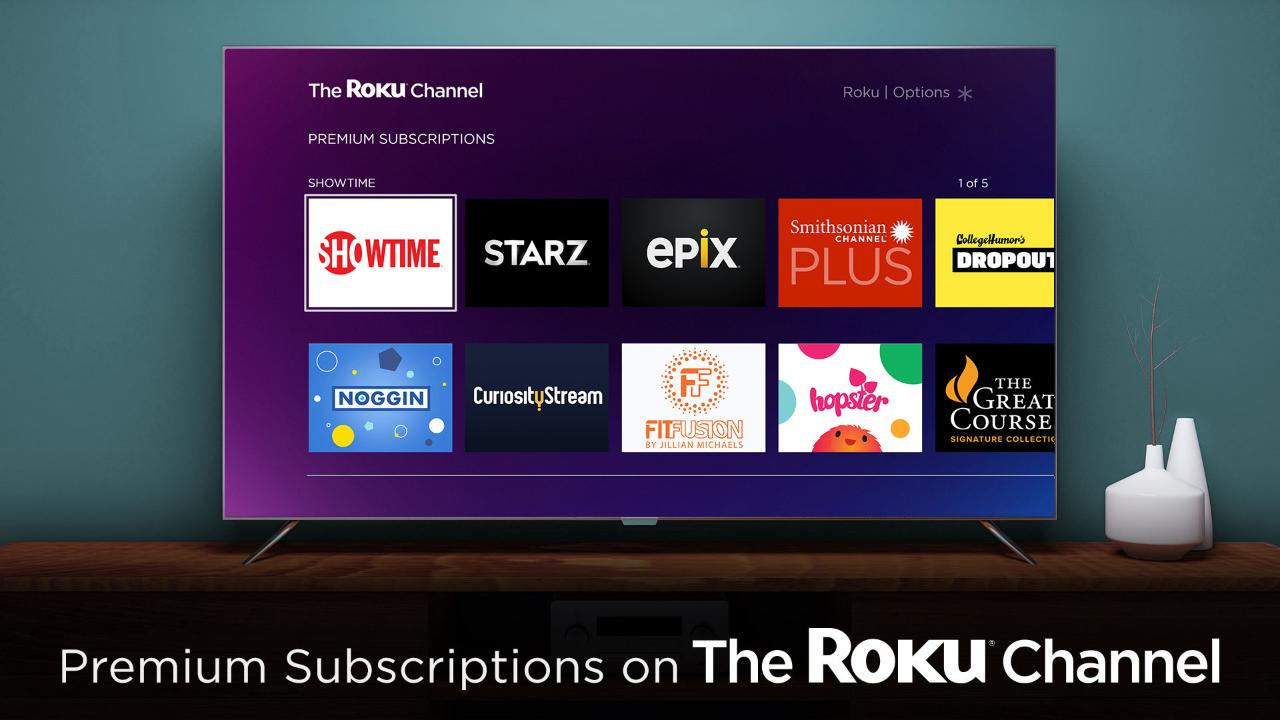Roku is getting into premium subscriptions
Subscriptions are a modest part of Roku's (NASDAQ: ROKU) platform business, with the company keeping a 20% cut of subscription and a-la-carte transactions. The bulk of platform revenue has always been advertising. The Roku Channel, which launched in late 2017, is an incredibly important first-party ad-supported channel.
But Roku is now getting into the premium subscription business.
Moving upmarket
The company announced today that it is adding premium subscriptions to The Roku Channel, adding another tier of high-quality content to complement its large catalog of free ad-supported content, which is typically older movies and TV shows. Roku will be adding over 25 premium subscriptions to The Roku Channel, including CBS' Showtime, Lionsgate's Starz, and MGM Studios' Epix, among others. The announcement notably does not mention AT&T's HBO.
The Roku Channel viewers will be able to start free trials of any premium channel, and all billing and subscriptions will be managed through their Roku accounts. Roku had nearly 24 million active accounts at the end of the third quarter, making it an attractive distribution channel for content owners. In comparison, Comcast, which is the largest cable provider in the U.S., had approximately 22 million total video customers at the end of the third quarter.
More importantly, ongoing cord-cutting is helping Roku to grow its active account base while Comcast's video customer base continues to shrink. Premium subscriptions will start rolling out this month and continue through early 2019. The company is also adding The Roku Channel to its mobile app as part of its broader push to expand beyond its own hardware players.
Social networking giant Facebook was reportedly considering adding premium channels to its Watch video platform before deciding not to move forward with the strategy, instead choosing to focus its video ambitions on free ad-supported content.
Competing with Amazon
In expanding into premium subscriptions, Roku is looking to challenge Amazon.com (NASDAQ: AMZN), which also offers third-party premium channels as part of its Prime Video platform. One key difference is that customers that subscribe through Amazon can access third-party apps and services directly, while customers that subscribe through Roku will have to access the channels through Roku's app, which is slightly less convenient.
While Amazon has payment credentials for Prime members, Roku doesn't for many of its active accounts that only view free content. That's another added inconvenience for some Roku users that might be interested in signing up.
Despite a few challenges, the move makes perfect sense for Roku by moving upmarket into the lucrative business of selling third-party premium content, earning a cut of subscription revenue in the process. Average revenue per user (ARPU), which Roku presents on a trailing-12-month basis and is calculated as platform revenue divided by active accounts, has already been soaring as the company has been ramping ad sales.
Adding in premium channels has the potential to help maintain that ARPU momentum.
10 stocks we like better than Roku, Inc When investing geniuses David and Tom Gardner have a stock tip, it can pay to listen. After all, the newsletter they have run for over a decade, Motley Fool Stock Advisor, has quadrupled the market.*
David and Tom just revealed what they believe are the 10 best stocks for investors to buy right now... and Roku, Inc wasn't one of them! That's right -- they think these 10 stocks are even better buys.
Click here to learn about these picks!
*Stock Advisor returns as of November 14, 2018
John Mackey, CEO of Whole Foods Market, an Amazon subsidiary, is a member of The Motley Fool's board of directors. Evan Niu, CFA owns shares of Amazon and FB. The Motley Fool owns shares of and recommends Amazon, FB, LGF-A, and LGF-B. The Motley Fool recommends CMCSA. The Motley Fool has a disclosure policy.




















